It’s true, when we’re nervous we may talk too much. Maybe even ramble.
Asking for a contribution makes most people nervous which results in feeling the need to persuade by over-sharing. Put these together, and we have the perfect storm to make the most common fundraising mistake: talking too much.
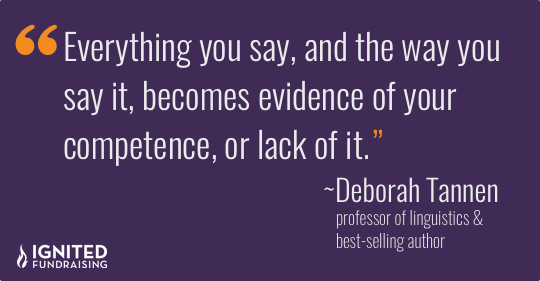
Have you’ve ever walked away from a conversation or meeting thinking, “Why didn’t I just close my mouth and stop talking?” I have.
We start off with a terrific point and then we get out on what I call the tree branch and we can’t figure out how to get back to the original topic.
Don’t do this:

A few months ago, I received a phone call inviting me to make a contribution to an organization I regularly support. The gift amount was fine and the story shared was interesting. But I waited for an opportunity to answer and then I waited some more.
After 5 minutes of the other person talking I lost interest. My mind wandered and, frankly, I began to wonder when they were going to stop talking. I was no longer listening. I didn’t make a contribution that day.
If you want to get a YES — use fewer words.
Every ask should have these three elements:
1. Teach something new
2. Inspire
3. Call to action
How long should you talk?
Fundraising guru, Jerry Panas, says at least 50 to 55% of the conversation should be spent LISTENING.
Meaning, if you have a 5-minute phone call to ask for a contribution you have 2 to 2½ minutes to talk – including the greeting and wrap up.
Tactics to Help Eliminate Rambling
1. Pause often.
When you say “Hello, how are you?” – Wait to hear the answer and really listen to what’s being said.
2. Ask questions to learn more about the donor.
Every meeting with a donor is an opportunity to learn more about why they support your work. It’s your opportunity to forge a deeper relationship. Usually by saying less and listening more.
3. Listen to learn.
Too often we listen for the pause from the other person so we can say what we feel needs saying to convince them.

The reality is, the more the other person talks, the more likely they are to give. . . and give more. Over and over again I’ve heard about ask conversations where the donor literally talked themselves into giving more than was expected.
4. Come to the meeting prepared.
Be prepared to share stories, startling facts, and to make your ask. But plan to use some, not all, of the information you’ve prepared.
With good planning you much more likely to actively listen when the conversation moves in different directions.
5. Leave your nerves at the office.
If you are more worried about “doing it right” than having a meaningful conversation, you’ll ramble. You’ll also cause your donor to feel uncomfortable. So, leave your nervous self at the office and bring your best listening self to the meeting or call.
Best practices: Breathe. Listen. Nod. Pause. Repeat.
Join Lori for one of her high-energy signature workshops: Art of Asking, May 14, 2019 – 9:30 to Noon, Minneapolis, MN. Hosted by Minnesota Theater Alliance. This session is open to any and all nonprofit organizations.

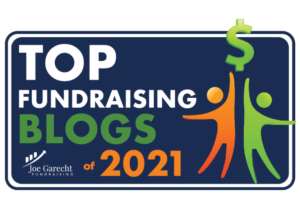


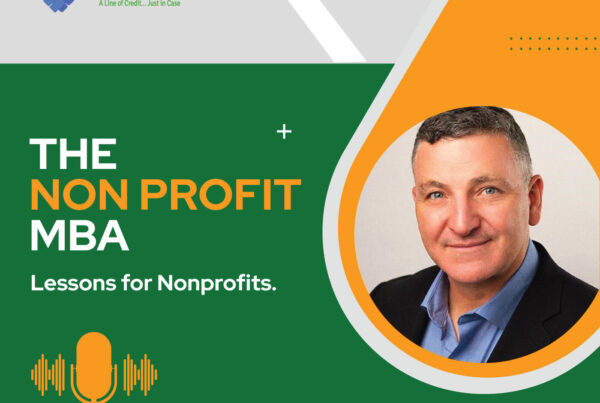
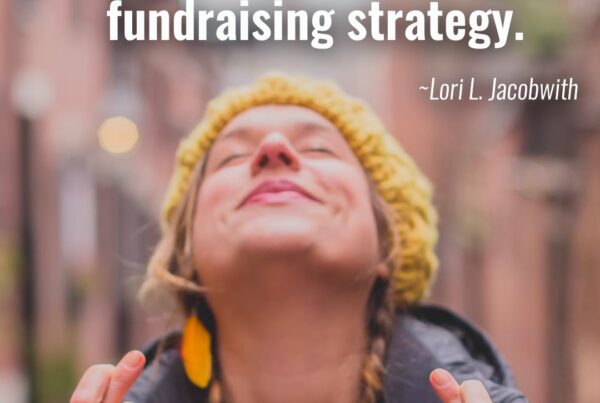
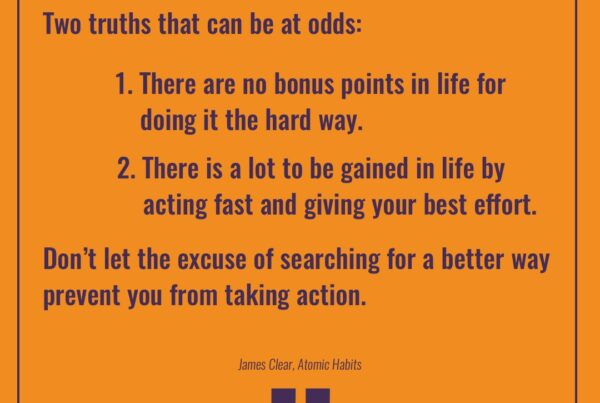
I recently attended Lori’s signature workshop “Art of Asking.” It was truly high-energy, as well as informative and personal. Even with 15 people in the class, Lori took the time to answer our individual questions and offer custom advice. I arrived nervous and intimidated and left hopeful! I strongly recommend her course.
I love that you left hopeful, Marlene! Thank you for your kind comment AND your full participation at the workshop. Your organization is fortunate to have you! ~ Lori
Lori you are a very good speaker.. I am learning more about story telling.i didn’t know that stories can mean a lot in fundraising but you have opened up my eyes for the betterment of the Organization i work with.
Joshua,
Thank you for your kind words! I hope that you are able to craft some powerful stories to share with your community to spur on deeper engagement and bigger giving.
To your fundraising & storytelling success!
Lori